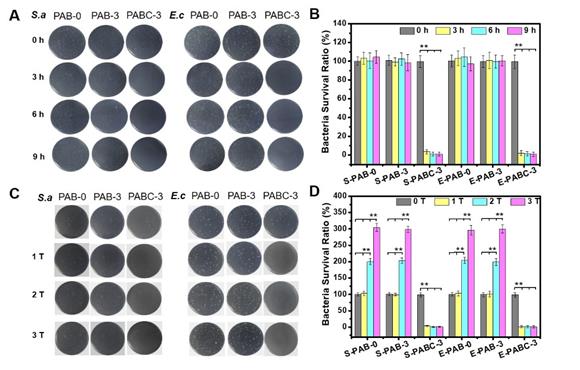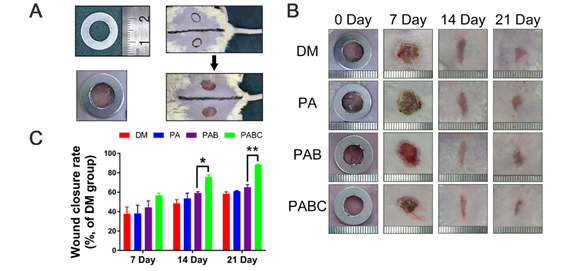13.3
Impact Factor
Theranostics 2022; 12(10):4599-4600. doi:10.7150/thno.73263 This issue Cite
Erratum
Bioactive antibacterial silica-based nanocomposites hydrogel scaffolds with high angiogenesis for promoting diabetic wound healing and skin repair: Erratum
1. Department of Burn, the First Affiliated Hospital of Wenzhou Medical University, Wenzhou 325000, China
2. Key Laboratory of Orthopedics of Zhejiang Province, the Second Affiliated Hospital and Yuying Children Hospital of Wenzhou Medical University, Wenzhou 325027, China
3. School of Physical Science and Technology, Inner Mongolia University, Hohhot 010021,China
4. Frontier Institute of Science and Technology, Xi'an Jiaotong University, Xi'an 710054, China
5. Department of Orthopedics, Zhuji People's Hospital of Zhejiang Province, Shaoxing 312000, China
*These authors contributed equally to this work.
Published 2022-5-28
Corrected-article in Theranostics, Volume 10, 4929
In our paper, Figure 4 and Figure 6 should be corrected as follows. The authors regret that this mistake was happened, although these mistakes have no effect on the conclusion in this paper.
Robust antibacterial activity of PABC hydrogel. A-B) Growth picture of bacteria (S.aureus and E.coli) on agar plate (A) and survival ratio (B) after co-culture with hydrogel for 0, 3, 6 and 9 h; C-D) Bacteria (S.aureus and E.coli) growth graphs on agar plate (C) and survival ratio (D) after co-culture of hydrogel for repeatable times (adding bacteria respectively at 0, 3, 6 h). (*p<0.05 and **p<0.01.)

Effect of hydrogel on diabetic wound healing. (A) Construction of diabetic wound model in ICR mice (about 1 cm in diameter); B) Gross observation of wound healing process during 21 days treatment by various hydrogels (PA, PAB, PABC), DM: Diabetes mellitus wound was used as a control; (C) Wound closure rates at day 7, 14 and 21. (*p<0.05 and **p<0.01.)

Author contact
![]() Corresponding authors: Dr. Cong Mao, Email: maocongedu.cn; Prof. Bo Lei, Email: raybooedu.cn; Prof. Cai Lin, Email: lincai0577com
Corresponding authors: Dr. Cong Mao, Email: maocongedu.cn; Prof. Bo Lei, Email: raybooedu.cn; Prof. Cai Lin, Email: lincai0577com
 Global reach, higher impact
Global reach, higher impact